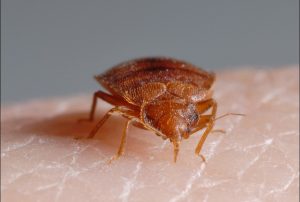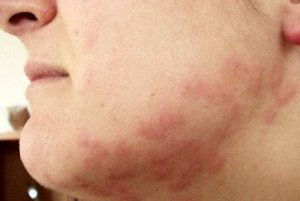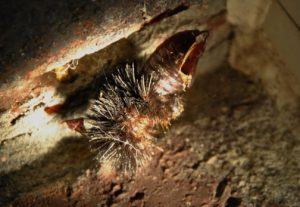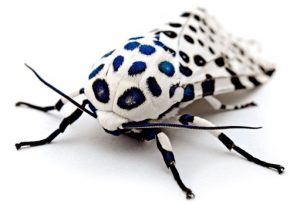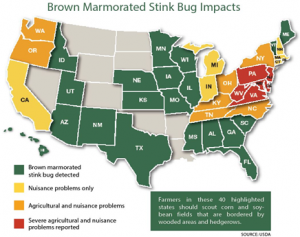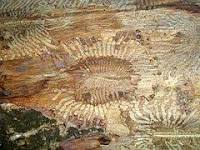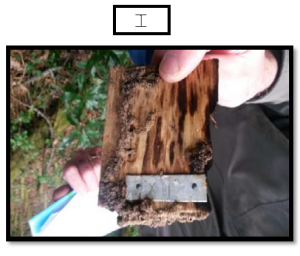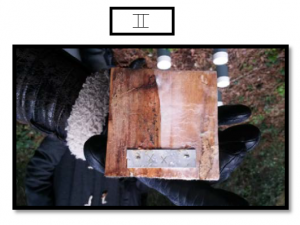Agricultural sector plays a strategic role in the process of economic development of a country. It has already made a significant contribution to the economic prosperity of advanced countries and its role in the economic development of less developed countries is of vital importance.
Pests, considered as an age-old enemy of agriculture, continue to thwart the sector by destroying the crops. Though tiny, they are capable of large-scale destruction. Termites can cause agricultural damage due to their voracious appetite for cellulose and, in other parts of the world, other materials. The exact dollar amount of loss due to termite damage is unknown in the agricultural world.
Agricultural damage can occur in several ways. First, the termite can i nfest the crop itself and limit the yield. Second, the termite can interfere with farming infrastructure such as by destroying poles that support fencing. Third, the termite can destroy containers used to ship agricultural products.
nfest the crop itself and limit the yield. Second, the termite can interfere with farming infrastructure such as by destroying poles that support fencing. Third, the termite can destroy containers used to ship agricultural products.
On average the pests are known to cause 10-16% agricultural produce loss. The insects attack several agricultural and horticultural crops. It is estimated that the loss accumulated due to damage to these crops may run to several millions of rupees per year. In North America, few crops are vulnerable to termites. However, termite species in other parts of the world may infest the actual crop and cause damage. Since termites are social insects and are in a colony, termite damage is generally concentrated and not widespread in a field. Locusts, for example, are not social and have no colonies, so when they attack a field it is in a quick and somewhat chaotic manner. Termites have been known to attack paper products including record keeping so the agribusiness is negatively affected. Packaging material has a long history of attack by termites.
Let us look at some news articles:
Pest threatens crops on Hudson Valley farms
May 23, 2017, News 12 Hudson Valley
The crop-eating allium leaf miner is from Europe. Experts say the bug, which thrives on vegetables like onions, garlic, and leeks, was first found in the U.S. two years ago in Pennsylvania. Since then, it’s infested the Northeast destroying crops. It’s also made its way to the Hudson Valley.
“First I’ve seen it in my fields ever was a few weeks ago. I thought it was a mini-termite,” says fourth-generation black dirt onion farmer Chris Pavelski, of Pine Island.
Ethan Grundbert, of the Cornell Cooperative Extension, says if the population continues to build like it has in Pennsylvania, it could be a serious issue Hudson Valley farmers are faced with the next few years.
News 12 has learned that the bugs die off in the summer months but reappear in the fall.
Currently, pesticides are still being tested.
A village plundered by termites and orphaned by the state government
Feb 19, 2017, Hindustan times
Farming and cattle rearing are their source of income. “Every family has at least two cattle. Their survival is a daily struggle. Every year, we spend Rs 15,000 to Rs 20,000 in buying grass,” former pradhan Padam Singh says.
So, what ails Lambari? An RTI application filed by Hindustan Times to the district magistrate’s office shows that in 1994, 1998 and 2009, work plans to control termites were formulated by district officials. However, the higher administration refused funds for the plans.
The agriculture department accepts that insecticides it provides to villagers have only been able to reduce termites in agricultural fields and have no effect on termites inside the buildings.
75% of the agricultural area was under termite attack. A work plan costing Rs 4.7 lakh was prepared. But funds were not granted. “Common pesticides become ineffective in Lambari because the population of termites is significantly high,” former vice-chancellor GBPUAT Prof BS Bisht, who commissioned the 2009 team, says.
Department of Agriculture issues ‘Stop Work Order’ against Sunland Pest Control
Sep 4, 2015, 25 WPBF
The Florida Department of Agriculture and Consumer Services have issued a Stop Work Order prohibiting Sunland Pest Control from conducting any fumigation at this time. This comes after a Palm City boy suffered brain damage after termite fumigation at his Palm City Home. “We are aware of the tragic and heartbreaking incident involving Peyton, and the Florida Department of Agriculture and Consumer Services is investigating Sunland Pest Control in collaboration with the EPA and the Department of Health,” the department said in a statement late Friday afternoon.
Peyton McCaughey turned 10 Thursday at Miami Children’s Hospital, barely able to turn his head, unable to stand up or talk. His family said the boy has suffered brain damage after termite fumigation on their house.
C Tech Corporation, an Indian company has come up with an impeccable solution to counteract problems caused by such an insect. Combirepel™ is a non-toxic, non-hazardous termite/insect repellent which has been designed for various polymeric applications as well as natural materials. It is a unique blend of green chemistry and smart technology which acts as an effective repellent and at the same time guarantees safety to the environment, plants, animals and fragile ecosystem.
Our product works on the mechanism of repellency. It temporarily inhibits the mating cycle of the insects. The product impairs the ability of the insects to reproduce, that is the insects will not lay eggs or the laid eggs will be infertile. The product causes feeding disruption in an insect by triggering an unpleasant reaction within the insect which might try to feed on the application. The product temporarily blocks the reproduction system of the insects by hindering the release of the vital hormones for growth.
The product available in the form of masterbatch can be incorporated into the base polymer of the polymeric applications like the wires and cables, pipes, household utilities, etc. to keep the pest away from the application.
The product available in the form of liquid concentrate can be mixed in paints and be applied on the interior and exterior of the houses, schools, hospitals, warehouses, offices etc. to keep these areas safe from these pests.
The product available in the form of lacquer form can be used as a direct application. The lacquer can be applied to the already installed applications like the wires and cable, pipes, metal decors, racks and pallets from stores rooms etc.
Combirepel™ is thermally stable and does not degrade on exposure to heat and sunlight. It does not kill or harm the insect but repels them. It does not volatilize and does not degrade the soil. It is RoHS, RoHS2, ISO, REACH, APVMA, NEA compliant and FIFRA exempted.
Contact us at technical.marketing@ctechcorporation.com to keep the pests away.
Also, visit our websites:
http://www.ctechcorporation.com/
http://www.rodrepel.com/
http://www.termirepel.com/
http://www.combirepel.com/
Follow our Facebook pages at:
1] https://www.facebook.com/Combirepel-411710912249274/
2] https://www.facebook.com/Termirepel-104225413091251/
3] https://www.facebook.com/Rodrepel-120734974768048/
Follow us on our Twitter pages at:
1] https://twitter.com/rodrepel
2] https://twitter.com/termirepel
3] https://twitter.com/combirepel


